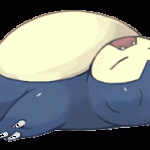Bipolar disorder is one of the most well known neurological disorders, characterized by alternating states of prolonged depression or manic states (the term is often misused, such as to characterize a moody friend). Because two different states exist, it is difficult to administer one single drug that can alleviate both symptoms. Thus, mood stabilizers are often used to treat mania, while antidepressents seem to be the obvious choice for treating the depression stage.
Common mood stabilizers used today include lithium (administered as various salts), carbamazepine, valproic acid/valproate, and lamotrigine. These drugs have shown varied effectiveness in depressing the elevated mental state seen in mania or hypomania. However, these drugs were not designed with a certain mechanism of action in mind. Instead, hypothesises have to be made to predict how these drugs actually work neurologically. The paper our class reviewed this week put forth the “arachidonic acid cascade” hypothesis. Arachidonic acid is a polyunsaturated fatty acid that plays a role in many biological processse, including neurotransmission, gene transcription, sleep, memory, inflammation, and behavior. Too much arachidonic acid are linked with inflammation, ischeme, and convulsions. According to this AA cascade hypothesis, the aforementioned mood stabilizers may regulate mania by downregulating the arachidonic acid cascade, thus preventing some of the problems from its overexpression.
The paper only focused on treating mania. Treating the depressive state of BD is a whole new beast. Bipolar depression is three times more common than mania. The mood stabilizers mentioend above (except lamotrigine, to a small extent) are not able to treat depression effectively. It would be natural to assume that antidepressants would be a good treatment. However, most antidepressants increase the likelihood of switching back to mania, which is obviously not a desirable alternative, even when used in tandem with mood stabilizers.
An (not completely accurate) analogy would be considering a Snorlax, Pokemon #143. Consider the manic phase of Snorlax to be an aggravated, aggressive state (usually resulting in an intense pokebattle). Like in BD, this phase is much less common than the depressive state, the state we usually associate with Snorlax. In this “depressive state”, Snorlax is just sleeping and generally lethargic about the world around it. View an antidepressant as chucking a ton of apples at the Snorlax so it will wake up (come out of depression). If you do succeed in waking the Snorlax, it is likely it will instantly convert into a “manic state”, understandably angry from being disturbed so rudely. The antidepressant (apples) may have worked, but it resulted in another undesirable state. What BD needs is a Pokeflute: something that can gently bring the Snorlax out of depression but not bring it to an overactive state. However, since we regrettably don’t live in a fantasy world, this is much easier said than done.
Images obtained from Google Images.

